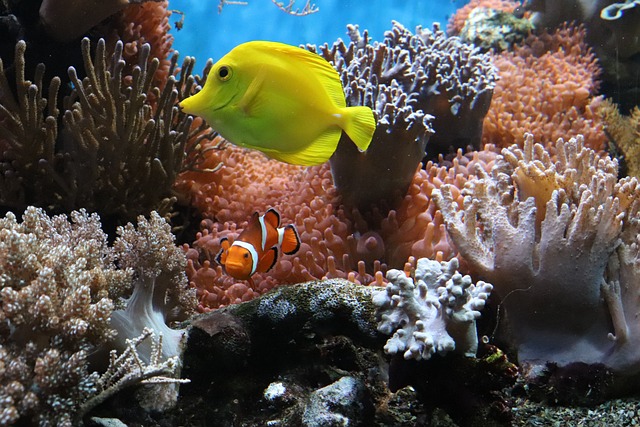

An overview of coral habitats and the animals that live there, including clown fish, sharks, giant clams, and more. - Publisher
Great Barrier Reef tells you all about the geography, people, climate and wildlife of this rich and fascinating coral habitat, and highlights the conservation work that is being done to keep it as wonderful as it is.
Explore the Great Barrier Reef and learn all about what it's like to live in this biome, from what kinds of plants and animals are found there to what kinds of weather it receives.
Explores the various ways our planet is being polluted and what the effects of this pollution have been and will be in the future. This book shows how people are trying to stop the pollution and find ways to reverse the effects, and highlights ways in which we can all make a difference to the environment.

Coral reefs are home to so many different kinds of sea creatures that they are known as the rainforests of the seas. Sadly, coral reefs all around the world are dying, but Chou Loke Ming is on a mission to help them recover. Loke Ming went from being a village boy to a coral doctor, and is saving the world one coral at a time.
All it takes is one: One coral gamete to start a colony. One person to make a difference. One idea to change the world. The ongoing efforts to save and rebuild the world's coral reefs - with hammer and glue, and grafts of newly grown coral - are the living legacy of Ken Nedimyer.

An underwater hub of life teeming with colourful corals, fishes and other marine creatures is hidden below the busy pontoons of Marina at Keppel Bay. PHOTO: NATHANIEL SOON
(Image source: The Straits Times)
Singapore reefs are found mainly in the islands south of Singapore, like Sentosa, Pulau Hantu, The Sisters, Pulau Satumu (where Raffles Lighthouse stands) and many others. Click on the links below to find out more about Singapore's efforts to restore and conserve the coral reefs:
Coral reefs can be found all over the world! However, most coral reefs grow in shallow, clean ocean waters on either side of the Equator, because they need sunlight and warm temperatures all year to survive.
Some famous coral reefs include the Great Barrier Reef in Australia, the Amazon Reef in Brazil and French Guiana, the Tubbataha Reef in the Philippines and the Miami Terrace Reef in the United States.

A seagrass meadow
The sun is the source of energy for the coral reef ecosystem. Plant plankton, called phytoplankton, algae and other plants convert light energy into chemical energy through photosynthesis. Seagrasses are especially important because they provide shelter for juvenile reef animals like conch and lobster.

Animals that live on the coral reef include sea urchins, sponges, sea stars, worms, fish, sharks, rays, lobster, shrimp, octopus, snails and many more.
The growth of our civilization is changing the ocean in ways that are deadly for corals.
If we don’t act soon, it may be too late.
(Video source: NOAA Ocean Today)
Pollution, overfishing, destructive fishing practices and collecting live corals for the aquarium market are some of the many ways that people damage reefs all around the world every day. Besides that, a warming climate and rising water temperatures can cause corals to expel the beneficial algae living in their tissues—a condition known as coral bleaching—leaving them vulnerable to disease and death.
Travel with to the Philippines, where a young girl takes up her grandfather’s lifelong pursuit of protecting an endangered coral reef. Inspired by true stories, this virtual reality experience will take you diving on some of the world’s most beautiful reefs.